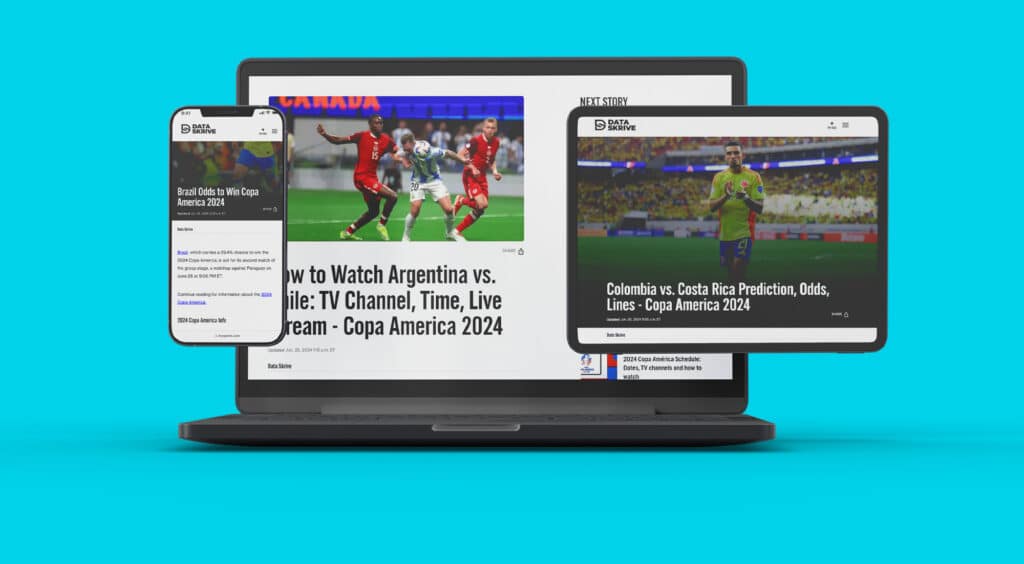As Copa America kicks off in the US this June, it marks a pivotal moment for American soccer’s continued growth. This tournament serves as a critical test to bridge the gap between casual fans and the die-hard supporters who fuel the sport globally. Success here is crucial, as Copa America paves the way for a series of major tournaments leading up to the 2026 World Cup, co-hosted by the US.
In this blog post, we’ll cover the many factors driving the rise in soccer fandom in the US, how tech giants are already investing in this lucrative market, and how media companies can tap into a rapidly growing fan base. Let’s dive in!
How soccer became popular in the US
The launch of Major League Soccer (MLS) in 1996 proved to be a massive turning point for soccer’s popularity in the US, experiencing tremendous growth from 10 teams starting in 1996 to 29 teams for the 2024 season. Since then, soccer in the US has been slowly developing. Here are a few factors supporting this success to help media companies understand the potential of this rapidly growing fanbase.
Age demographics Latino population Women’s soccer Game quality Age demographicsStudies show that most soccer fans are between 18 and 34, likely due to increased youth participation in the sport. This youthful trend is reflected in MLS itself, boasting the youngest fan base at an average of 37.4 years old, with 61% under 45, according to Nielsen data. Unlike traditional leagues, MLS aligns perfectly with the digitally native generation, including Gen Z males and streamers.
Latino populationThe Latino population is a driving force behind the surge in soccer popularity in the US. Reports show that 30% of MLS fans identify as Hispanic or Latino, and 60 million people in the US support the Mexican National Team.
This passion is fueled by the cultural connection to the sport, with many Latino families watching and playing soccer. Furthermore, the US has the second-largest Spanish-speaking population globally, and this demographic is expected to grow significantly. This growth, coupled with the Latino community’s rising economic influence (reaching $1 trillion in spending power), positions Latinos as a key market for soccer’s continued success in the US.
Women’s soccerThe US Women’s National Soccer Team (USWNT) has been a juggernaut, propelling soccer’s popularity in the US, winning a record-breaking four World Cup victories. The USWNT’s achievements have undeniably changed the perception of soccer in the US, with women and a new, younger male audience interested in the sport, reinforcing the diversity of the sport’s growing appeal.
Game qualityThe quality of play in MLS has become a major driver of soccer’s popularity in the US with the arrival of world-class talent like Lionel Messi, David Beckham, Zlatan Ibrahimović, and Didier Drogba, who have significantly boosted the league’s appeal. This influx of talent elevates the competition within MLS, creating a more exciting and high-quality product for new and existing fans. After Messi joined Inter Miami CF, games sold out, ticket prices reached $110,000, and viewership records were broken. The team’s social media following also increased from 3 million to 26 million followers.

The “Big 4” is now the “Big 5”
The “Big 4” leagues—NFL, NBA, NHL, and MLB—have long dominated media coverage. Their legacy and history are unquestionably stamped as some of the greatest leagues to help build American sports, but the future looks very different from the past.
While established leagues like MLB, NHL, and NBA grapple with declining attendance and TV viewership, MLS has seen attendance increase steadily for eight consecutive years, from 8.6 million attendees in 2019 to 10.9 million in 2023. In addition, the MLS’s average viewership of 343,000 per game nearly matches that of the NHL. Meanwhile, MLB struggles with a 30% attendance drop in 15 years, and average game viewership dropped from 2.4 million in 2020 to 1.5 million just three years later. Similarly, the NBA has faced historically low average viewers for the past three years.
As demographics shift and fan preferences evolve, media companies must adapt their coverage strategies to focus on next-gen sports.
Apple’s big investment
In June 2022, MLS agreed on a $2.5 billion media rights deal with Apple for ten years. This move was made in collaboration, as tech companies and broadcasters recognize the immense value of live sports programming. A recent Parks Associates report projects a 73% surge in sports streaming revenue by 2027, reaching $22.6 billion. The deal makes perfect sense for both parties, as it positions Apple within a rapidly growing league. In addition, studies show soccer fans are more likely to embrace streaming and recorded TV. Apple’s involvement is a powerful signal to the market: soccer is now a prime content source for streaming services.
Unlock website growth with soccer content
The rise of soccer presents a golden opportunity for media and publishing companies to tap into a passionate and growing fanbase. But how do you do it? First, we recommend that you know and understand your audience, which will guide your targeting and messaging strategy.
Second, fans want engaging content all the time, so you need to keep your website content fresh and up-to-date. It’s important to create soccer content that is accurate and relevant to sports fans when they need it most. We suggest the following articles to attract soccer fans to your website:
- Match Previews: Get in-depth analysis before every game, including team breakdowns, key players to watch, and tactical insights.
- Team Pages: Create web pages for each participating nation that provide detailed player profiles and statistics.
- Daily Match Roundups: Keep fans up-to-date with summaries of the day’s action and previews of upcoming matches.
- How-to-Watch Guides: Ensure your audience knows exactly where and when to catch every soccer game.
- Odds and Predictions: Add a layer of excitement with articles featuring match and tournament winner odds, as well as predictions for top scorers.
- General Matchup Previews: Fuel pre-game anticipation with detailed breakdowns of upcoming clashes between rival teams.

Third, don’t limit yourself to national and international tournaments. There’s an entire world of soccer out there, and you can cover club matches in countries with a much larger fan base.
How media companies can capitalize on the soccer opportunity
By partnering with Data Skrive, we help you target the right audience and generate soccer content for matches happening worldwide. We help our customers boost performance in the following areas:
- More Traffic: High-quality soccer content attracts passionate fans who keep coming back for their daily dose of footy news.
- More Fan Engagement: Our insightful and engaging content fosters deeper connections with your audience, leading to increased brand loyalty.
- More Revenue: More traffic translates to more revenue opportunities through advertising, merchandise sales, or other ventures.
While the US may not match the global soccer obsession, the tide is turning. Once a tertiary sport, soccer is steadily climbing the ranks. Growth will continue, especially with the 2026 World Cup on US soil. The 2024 Copa America is also a prime opportunity to capitalize on this opportunity. Don’t miss out on the opportunity to connect with this global fanbase.
About Data Skrive
Data Skrive is transforming the way sports fans around the world connect with their favorite teams, players, and brands. Our technology enables personalized experiences for every sports fan across the globe, and we power some of the biggest names in sports, media, and betting. Combining our breadth and depth of sports knowledge with content tailored to individual needs, we nurture fans during every window of interest to maximize engagement. For more information, email us at info@dataskrive.com. For press inquiries, email press@dataskrive.com.